Best Insect Repellents for Kids
Bug bites can wreak havoc on summer fun, especially in places where mosquitoes and other biters are plentiful (like… the entire east coast, midwest and great lakes).
At best, itchy bug bites can make kids miserable. At worst, mosquito and tick bites can transmit terrible infectious diseases like West Nile Virus, St. Louis encephalitis, Lyme disease, and Rocky Mountain spotted fever. Our friend’s daughter just got dengue fever over Spring Break this year (2024) in Puerto Rico, so it’s something to think about when you’re traveling as well.
We’ve broken down all of the different ways to keep bugs at bay, featuring our favorite bug repellent options for these common culprits:
Mosquitos
The Zika virus was a concern for a while, but didn’t materialize in the United States the way it was originally feared (phew!). That said, it continues to be a concern in the tropics, so take note if you’re planning travels for a Babymoon.
You’re probably more concerned about the misery of mosquito bites rather than contracting a mosquito-borne illness, which is fairly rare in the US.
Ticks!
Ticks are nasty little suckers that can cause fun diseases like Lyme disease and Rocky Mountain spotted fever. Caused by the bacterium Borrelia burgdorferi, Lyme is transmitted through the bite of infected deer ticks (aka blacklegged ticks).
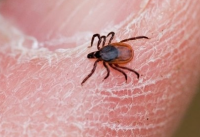
A couple of years ago, Zika was at the top of our worry list when it came to insects — but now, it’s Lyme disease.
The condition, which has been around for thousands of years, was recognized in the United States in the 60s and 70s, and it’s been on the rise.
Goudarz Molaei, the director of the Connecticut’s CAES tick testing program, said about 40 percent of the more than 2,600 ticks checked carried Lyme disease. “This is roughly 10 percent higher than what we have typically seen over the last five years,” Molaei said.
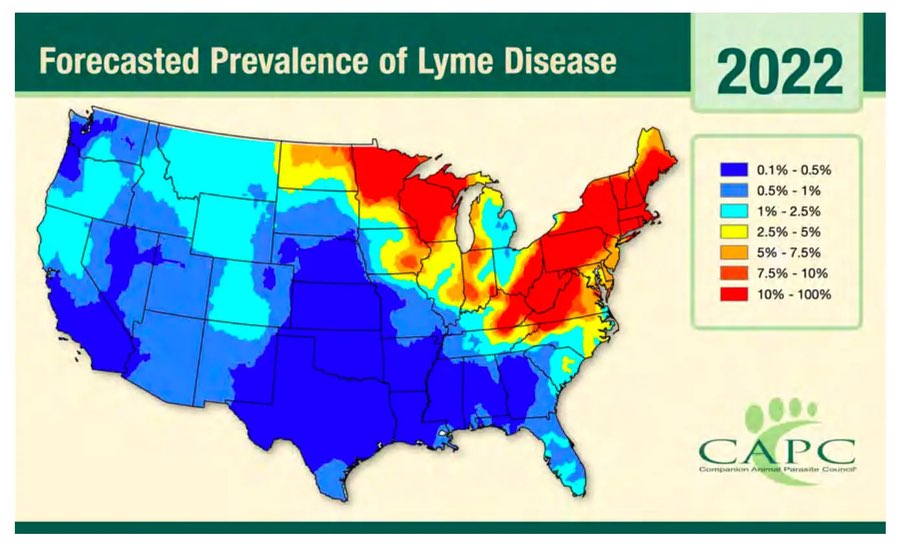
“Ticks are pretty much everywhere [in the Northeast],” Andreadis warned. “There’s virtually no wooded area you can venture into that doesn’t have these ticks.” He said anyone walking through wooded or brushy areas should use tick repellents and/or wear tick-repellent clothing.
Blame Habitat Destruction and Hence… Mice
A big factor in the increase in Lyme disease is habitat destruction (building further and further out into the suburbs), which increases the population of mice due to the habitat destruction of foxes, hawks, and owls who prey on them. Maine experienced a record number of Lyme disease cases in 2023, and researchers at the University of Maine are launching new studies to understand how weather and wildlife influence tick populations.
In fact, mice infect up to 95 percent of ticks that suck their blood, and most of the ticks carrying Lyme disease in the northeast were infected by mice.
To make the problem worse, the ticks that are the most likely to transmit the disease are also the smallest! Yes, ticks that are in the “nymph” stage are the most likely to transmit Lyme; unfortunately, they can be teeny, tiny and very difficult to see: about the size of a poppy seed. See the photo below from the CDC that went viral on Twitter:
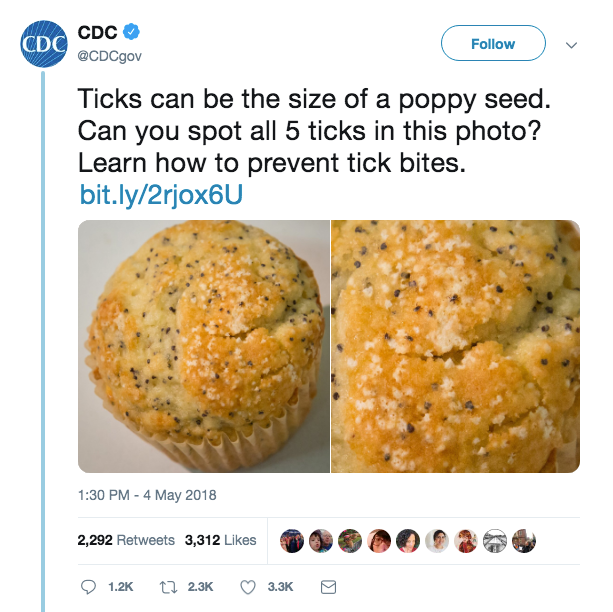
Given their tiny size, nymphs can bite people and remain virtually undetected. They also burrow into your or your pet’s skin.
I don’t know about you, but that’s enough to make me avoid the woods in the summer! (Also: never eating a Poppyseed muffin ever again…)
For those in tick country, make a habit of doing a tick-check after spending time outside with your munchkin. This is best done during a diaper change or bath time when your boo is nakey. Make sure to check their hair, under the arms, in and around the ears, behind the knees, and other “hidden” places.
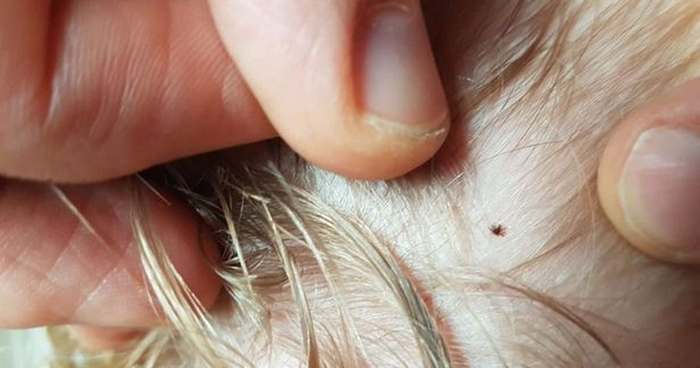
Check it all because — many times — ticks can be removed (and killed) before they’ve actually bitten (below).
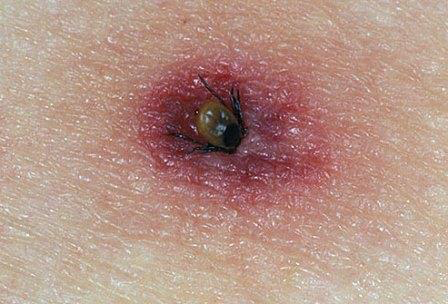
Good news: the tick typically needs to be on you (sucking your blood and attached to you) for at least 36 to 48 hours before it can transmit the Lyme pathogen. Thus, this is why doctors stress that we should check our kids DAILY for ticks — if you miss it one day, you’ll catch it the next.
The earlier you catch it and treat it, the better. In terms of medical advancements, a new diagnostic test for Lyme disease, the Liaison LymeDetect, has been submitted for FDA approval. Left untreated, Lyme Disease can wreak havoc on your long-term health and quality of life, causing symptoms like joint pain, chronic fatigue, hearing loss and even heart problems.
Protecting Your Kiddos from Ticks, Mosquitos and other Insect Bites
As with sun protection, the strategy to protect your babe from insect bites and stings is multi-fold:
- Cover up: The best way to prevent bug bites is to keep your kid covered: long-sleeved shirts, long pants tucked into socks, hats, etc. Pants and sleeves are a tough sell in hot weather, so look for breathable fabrics.
A note: mosquitoes can bite through leggings — yikes!! It’s basically like bare legs…
- Avoid perfumes and lotions: Scented perfumes, lotions, and creams attract insects. Opt for odorless sunscreens and lotions.
- Netting: You can purchase mosquito netting, like the one below, for your stroller/car seat when you’re strollering about.
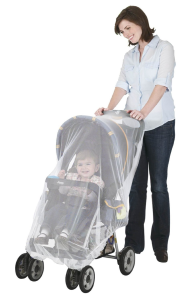
- Use insect repellent on exposed skin (below).
- If in extreme conditions (backwoods camping and whatnot), treat clothing with Permethrin (more below).
- Tick checks: I repeat, if you live in an area where ticks are the norm, daily tick checks need to be part of your routine (ideally, this is a daily “ritual,” if you will).
Bug Repellents for Children
Like most matters that involve kids and chemicals, there are differing opinions as to what constitutes the best bug repellant. Natural spray? Chemical repellant? Citronella or DEET? (Remember: even the very best bug spray is in reality just one layer of protection.)
The Centers for Disease Control (CDC) recommends using products that have been shown to work in actual scientific trials and contain active ingredients that have been registered with the Environmental Protection Agency (EPA).
Two ingredients have unequivocally demonstrated a higher degree of efficacy in peer-reviewed, scientific literature. These ingredients have also been blessed (with caveats) by the AAP (American Academy of Pediatrics) and The Environmental Working Group (EWG):
- DEET
- Picaridin
Read on to learn more…
The Deets on DEET
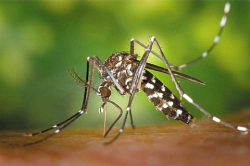
- DEET works really, really well! This stuff repels mosquitoes by activating the olfactory receptor neuron in the antennal sensilla of mosquitoes.
- Is it safe for pregnant women? “If you are pregnant, and you are in an area with serious mosquito-borne diseases, use repellant with high amounts of DEET, and reapply it as often as necessary,” says Dana Boyd Barr, professor of exposure science at Emory University in Atlanta. So, yes. Your other option is to cover up — or just stay indoors.
- DEET has a bad rap, but research indicates there’s never been evidence of adverse effects. That said, it’s not like it’s nothing — frequent, long-term use is not ideal. According to Dr. Martin Belson, a pediatrician and medical toxicologist: “No definitive studies exist in the scientific literature about what concentration of DEET is safe for children… but no serious illness has been linked to the use of DEET in children when used according to manufacturer’s recommendations.”
- Products with higher concentrations of DEET don’t work better, per se, they simply last longer. Therefore, Belson continues, “If you can regularly reapply the insect repellent when you are out for long periods of time, or if your child will only be outside for a few hours, a repellent with 10% or less DEET should be enough.”
A note: I hear a lot of parents talking about how nervous they are about DEET and other such chemicals with their kids… and I HEAR THIS, I really, really do — but if you live in an area where ticks/Lyme disease are a problem, that may be a worthwhile “risk.” Living in the woods in Maine (Brit), I would SO much rather add this protective layer than elevate the risk of Lyme disease.
Gawd, TICKS ARE THE WORST!
Picaridin
Picaridin, the alternative to DEET, has been widely used in Europe for more than 20 years. Picaridin is just as effective as DEET, if not more so, and it doesn’t cause skin irritation, so it’s a great choice for sensitive skin. It also doesn’t have that smell. (You know, the bug spray parfum.) Americans have always been die-hard DEETers, but Picaridin is slowly making its way onto the shelves of American households.
Picaridin is endorsed by both the CDC and the WHO, and it’s EPA-approved for children as young as two months old (!).
Generally speaking, pediatricians are okay with using lower concentrations of DEET (again, under 30%) and Picaridin (20%) on children with the caveat that they haven’t been studied in the long term. *Dr. Cara Natterson adds, “The worst data on DEET doesn’t hold a candle to the worst data on West Nile or Lyme.”
Alternatives
There are also DEET-free and non-Picaridin repellents which use natural ingredients such as citronella, cedar, soybean, etc. Let me be very clear: these repellents do NOT work as well, or even at all — though some may be good enough for those trying to avoid stronger chemicals. (As seen in a Consumer Reports study, many of these products offered less than one hour of protection — some, none at all.)
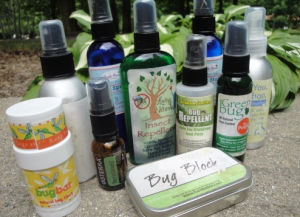
The exception here is oil of lemon eucalyptus (or synthesized PMD), which has been shown to be equally as effective as DEET. But sadly, it isn’t recommended for children under 3, because studies haven’t been performed for that age group. This is unfortunate.
*Please note that oil of lemon eucalyptus (PMD) is NOT the same thing as lemon eucalyptus essential oil. Please don’t use lemon eucalyptus essential oil (or a mixture of lemon essential oil and eucalyptus essential oil) as a bug spray — it won’t work. (Essential oils in general don’t really work as mosquito repellant or any other insect deterrent.)
Mosquito Spray Effectiveness
The bottom line is that repellents that feature DEET and Picaridin work waaaaaaay better than the natural repellants, but you don’t want to use them more than you have to.
Most of these products come in spray, wipe, or aerosol versions.
I prefer using wipes on children because I have way more control over where it’s going (I like to do a little dab on the forehead and ears, which would be very difficult with a spray). Plus, they aren’t inhaling the stuff, like with a spray or aerosol. I can usually cover both my girls with just one wipe towelette, so you can get more mileage out of them than you think. But some people like the spray application, of course — do whatever works!
Permethrin Spray and Treated Clothing
Yet another protective layer you can add to the mix is permethrin, which is a chemical you can use to treat clothing (vs. skin). You can purchase pre-treated clothing or you apply it yourself to clothing you already own.
If applied according to the directions, permethrin binds tightly to the fabric, causing little transfer to your skin… it’s also poorly absorbed by your skin. Currently, there is no data to suggest that children have increased sensitivity to permethrin. And it’s also considered safe for use with pregnant women.
When Bites Happen…
When bites happen, there are a couple of things you can do to nip the itching in the bud before it gets worse.
The first is so simple: simply hold a piece of ice on the bite for about 30 – 60 seconds. This works especially well if the bite is fresh. Ice is a vasoconstrictor, so it reduces blood flow to the area and decreases inflammation. The cold temperature also numbs the area, which helps with the itching.
If you’re a little late getting to the bite, we highly recommend Quitch stickers for bug bites. My family tried these out last summer, and the kids loved them (all kids love stickers, right?).

They come in a pack of 27 of assorted sizes and should get you through the itchy summer months.
Best Mosquito Repellent for Kids
We have been reviewing insect repellents for kids since 2013, so for 11 years now! It’s very interesting to see which products have come and gone and which have stood the test of time. Here they are:
Cutter All Family Wipes (15 ct) — 7.15% DEET ~$5
These 7.15% DEET wipes work very well at keeping the bugs off your babes. However (again), because it’s only ~7%, you may have to apply it more frequently than you would with a stronger blend (roughly every 3-4 hours, which may be plenty of time for most play sessions).
You can also opt for the aerosol spray version from Cutter, Cutter Backwoods, which comes at a decent price (this has a 25% DEET concentration).
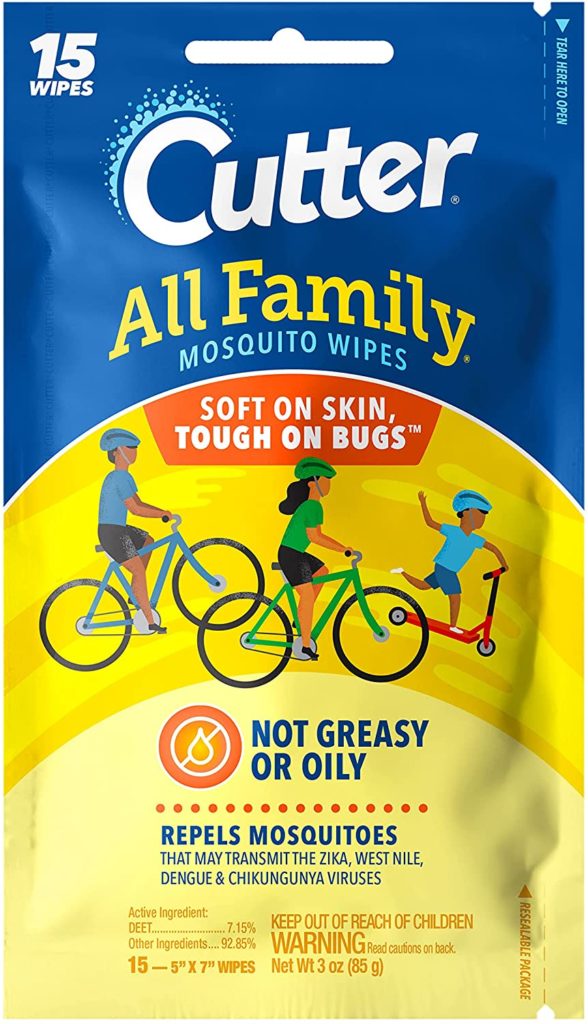

If you want a wipe with an even higher DEET concentration, if you are camping in the Canadian woods, say, we recommend Ben’s Wilderness Formula Wipes — but note that both of these contain more than 20% DEET.
Natrapel® repellents — 20% Picaridin ~$varies
Another DEET-free option… The gold standard for providing 8 hours of protection from Aedes and Culex mosquito species, this highly effective, non-DEET repellent uses 20% Picaridin to keep mosquitos away.
When we vacation in the summer in Virginia, I put this on the kids in the afternoon knowing it will last through dinnertime – and they NEVER get bitten (well, almost never).



Natrapel is mosquito kryptonite, y’all. I love their wipes in particular because I don’t have to worry about my kids ingesting the spray. One wipe is enough for two small kids.
Sawyer Insect Repellant Products — 20% Picaridin ~$varies
Everything from Sawyer is super highly rated and effective. They’re fragrance-free and dry/set nicely, too. You pick your delivery system here, which is nice — there’s a pump spray, continuous spray, and even a lotion option.
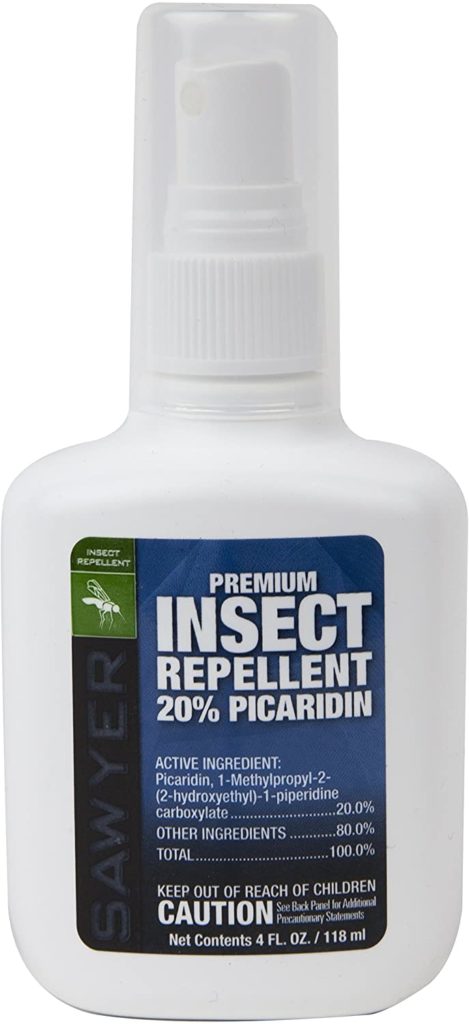

Cutter Lemon Eucalyptus Insect Repellent Pump Spray ~$varies
If your kids are over three, you may want to check out the enormously popular Lemon Eucalyptus spray by Cutter. This DEET-free spray uses the effective oil of lemon eucalyptus plant to repel bugs (and bug bites!) for up to six hours. Perhaps the most highly-rated “natural” insect repellent on the market.
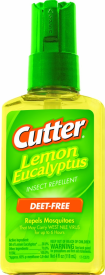

Natural Mosquito Repellents
These don’t have the same evidence behind them, but some still swear by them…
Badger Anti-Bug Balm ~$10
Badger Bug Balm uses citronella oil, cedar oil, lemongrass, rosemary oil, and geranium oil to keep bugs at bay. Best of all, it doesn’t reek like some of the other natural solutions. Some parents say it works pretty well…
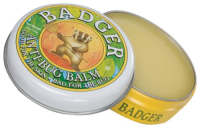

Sky Organics Bug Repellent (4oz) ~$12
Great for all the kids (and adults) in your family with sensitive skin. This one needs to be reapplied more often than its non-organic counterparts, but it’s still highly effective. Great for the occasional trip to the back yard!
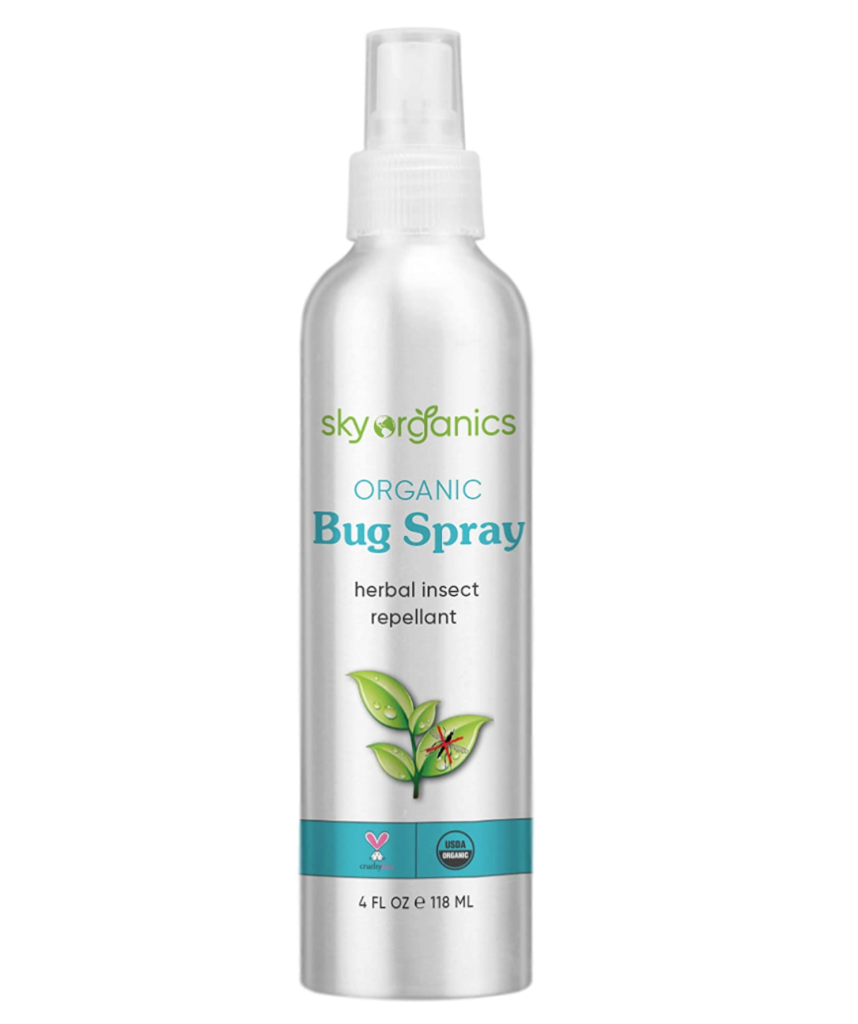

Lastly — a handy apparatus for hanging out in your backyard/porch/patio/etc:
ThermaCell Patio Shield ~$39
Plan on being stationary, and/or feel like dealing with this problem using modern tech? This thing is the best bug spray in a device, hah! (*It works by emitting a heat-activated, DEET-free repellent.) This little contraption is great for camping trips (think picnic table area) or small gatherings in open/outdoor spaces — it provides protection for a 20-ft area for 12 hours… All you have to do is place it in the center of wherever you’ll be congregating, and voila. Comes with great customer service and a 100% satisfaction guarantee.
Note: You need to turn it on/activate it for about 15 minutes prior to get the full effects.


Happy outdoors’ing!
Did you miss?
- Part 1: Best Baby & Kids Sunscreens
- Part 2: Best Swim Diapers
- Part 3: Sun Protective Clothing for Kids
Next in the Summer Series
Since you stated you dont’t need to know an Avon lady to get them, where can we buy the Avon wipes? Thanks.
found on amazon.com
You can get them from the main Avon webstore. If you would like to order from an Avon lady so they get the commission, you can order from me. My webstore is http://www.youravon.com/rplayer .
I just bought on Amazon.
Any suggestions for creams, lotions, balms to relieve bug bites?? My 7yo has such a bad reaction and I struggle to find anything that will relieve his itching!
Bug Soother! Look into it…. amazing stuff!
I Love your reviews! I love your article. God bless you!
Thank you for the bug spray guide. I’m not sure how you do it but you always send out your guides at the perfect time for me. I was just thinking this weekend about how I needed to figure out which bug spray to buy because my daughter, Lucy, got several bites over the last couple days. Last week’s life jacket guide was perfectly timed as well. Thank you again for all of your helpful articles!
Did you try or research Babyganics? It seems to have good reviews.
https://www.toysrus.com/product/index.jsp?productId=11130360#showReviews
Have you ever used the braclets or replent stickers? My little one is eight months and I was a little concerned about sprays and wipes. She has sensitive skin.
I have used the Lafe’s Organic Baby bug repellent and really like it. Again, not as strong as deet, but it’s something AND it’s not oily, which is nice.
Would you apply these wipes before or after sunscreen application?
Thanks for all of this info. I am putting together some information
for the homeless population for National Mosquito Awareness Week
and will use your information, and you will be cited.
I have never heard of Picaridin, will look into it as far as donations go.
Thanks so much!!
Patti
I’m an entomologist (i study mosquitoes) with a newborn living in an area of the country where both west nile virus and la crosse virus are common. I highly recommend using the off clip which basically creates a bubble of deet/repellent around the child (including my son). You have to watch the on/off switch or it will be used up quick but each one gets us through the daytime and twilight hours.
Did you know CATNIP is 10X more effective in repelling mosquitos than DEET?
https://www.sciencedaily.com/releases/2001/08/010828075659.htm
Have you tried or researched Ava Anderson Non Toxic bug spray? It is safe and effective–and it smells great too!
avaBUGS Ingredients: water (purified), aloe barbadensis (organic aloe vera juice), eucalyptus citriodora (organic lemon eucalyptus) essential oil, cymbopogon citratus (organic lemongrass) essential oil, lavandula hybrida (organic lavandin) essential oil, mentha piperita (organic peppermint) essential oil, rosmarinus officinalis (organic rosemary) essential oil, nepeta cataria (organic catnip) essential oil, xanthan gum
I love the Honest bug spray. I actually haven’t even tried it with kids, but instead use it as an adult. I’m a magnet for bugs and get red welts when bitten, but this seemed to protect me! We brought it to Hawaii and New Zealand and it was amazing at repelling almost everything. It also smells good (and not like those chemical deet bug sprays). I highly recommend it!!!
While I was researching this for our camping trip I saw that Oil of Lemon Eucalyptus is also not recommended for pregnant woman. Pretty much the same recommendations for kids under 3 are recommended for pregnant women. Good to know for growing families!
We just returned home from camping for the weekend with our 3 year old & 8 month old. We camped right by a lake in the woods. The only bug repellent I used was Honest Co & it worked great! Not a single bite on any of us & that was with a single application! You don’t need all the toxic chemicals to keep bugs away!
We do mosquito net at night and doTerra TerraShield diluted in water in a spray bottle.
We use the awesome natural bug repellent bars from here for our kids and they work real fine: https://thesolidbarcompany.com/collections/bug-bars. Will recommend for sure!
Hi, I want to subscribe for this weblog to get latest updates, thus where
can i do it please help out.
Hi Roxanne! You can subscribe using the “Subscribe” button on the top right hand side of the page at https://www.lucieslist.com/
You could definitely see your enthusiasm within the work you write.
The world hopes for even more passionate writers such as you who are not afraid to mention how they believe.
At all times go after your heart.
Very well-written and funny at times. Thanks for the information!
Thank you so much for a balanced and really informative post. Best wishes from the old home country.
According to this article https://www.consumerreports.org/insect-repellents/mosquito-repellents-that-best-protect-against-zika/ other than Eucalyptus, natural bug repellents don’t work against the Aedes mosquitoes, which can carry the Zika virus. While I doubt we’ll see this mosquito in NJ where I live I’m still worried since I have a 2 year old and a newborn. Do you have any recommendation for DEET kid safe products that have more than 7% concentration or do you just recommend more frequent application? Also is Picaridin safer than DEET or are they about the same? Thanks so much for your help.
I really needed this article! Thank you!!
What products are recommended/ safe to use when breaatfeeding?
none of these is contraindicated for breastfeeding
I love No Mosquitoz and No Natz by this company: https://www.nonatz.com/
Thanks Jaclyn for the recos! We’ll check them out for next year’s Summer Series articles 🙂
So what is recommended for a 4 1/2 month old who is teething and constantly has his fingers, hands, arms, feet etc… in his mouth!? We do a lot of hiking in upstate NY where ticks and mosquitoes are prevalent.
Natrapel has a manual pump spray version that is easier to control and much less greasy. That’s our go-to spray!
Please note that oil of lemon eucalyptus is not recommended for young children (under 3) because it is VERY bad for eyes. I’ve been researching the topic extensively as I lived in Hawaii and am now headed to Colombia with two young children, 2 and 5. Both lemon eucalyptus and picaridin measure up in effectiveness to DEET (check CDC and Consumer Reports), but picaridin is the safest choice for anyone under three or who has a tendency to rub their eyes. I can’t find the toxicity report on humans and eye contact but it was a high level of damage and I would absolutely recommend against using it on children. I hope everyone stays safe and best of luck!
Thanks Alice for sharing! Can you provide any links to articles where you did your research? Thank you!
Thanks Brittany! Can you provide our readers with any back up to this? Any links to reputable articles would be great!
Which goes on first, sunscreen or bug spray?
I like the Cutter products but they are definitely too chemical based for my liking. The ZERO Insect Repellent goes on really easily and it seems to work as well, it’s also oil of eucalyptus lemon but with a shea butter carrier. No chemicals at all. Happy Mom.
Great web site you’ve got here.. It’s hard to find good
quality writing like yours nowadays. I honestly appreciate people like you!
Take care!!
I live in a tropical environment where Zika is present and we have used and continue to use Lafes Baby Insect Repellent. It’s fabulous! (Since we reside in a Zika zone, we need long-term solutions that are not DEET or Picardin). I have also tried Cutter’s and have found that it burns the skin initially; not a problem for adults, but horrible for a youngster. But for any women who are pregnant or planning to get pregnant and their partners, you MUST use a chemical repellent, cover up, and avoid Zika zones whenever possible.
I am wondering your thoughts on Permethrin, which you mention but do not discuss in detail. I was under the impression that it is a bit safer since it’s on the clothing rather than the skin, but I guess if you really douse the clothing (or get the pre-treated clothing–i.e. Insect Shield) it’s on the inside of the cloth too so it might transfer…
Hi Heather! Thank you for bringing this to our attention, I went ahead and added some information to our article about Permethrin. It’s definitely a safe option (both for kids and pregnant women)… of course double check with your pedi for infants. If applied correctly, permethrin will bind to the fabric and not transfer to your skin. And even if it does get on your skin, it doesn’t absorb. That said, make sure to read and follow the application instructions fully. Also, any area of skin not covered by the treated clothing will need bug spray/wipe protection.
Just a word of caution as Drew doesn’t mention it :
lemon EO from citrus is a photo sensitive oil. I.e. Do NOT use in the sun. I would Use lemon eucalyptus or lemongrass instead for an even better safer repellent effect.